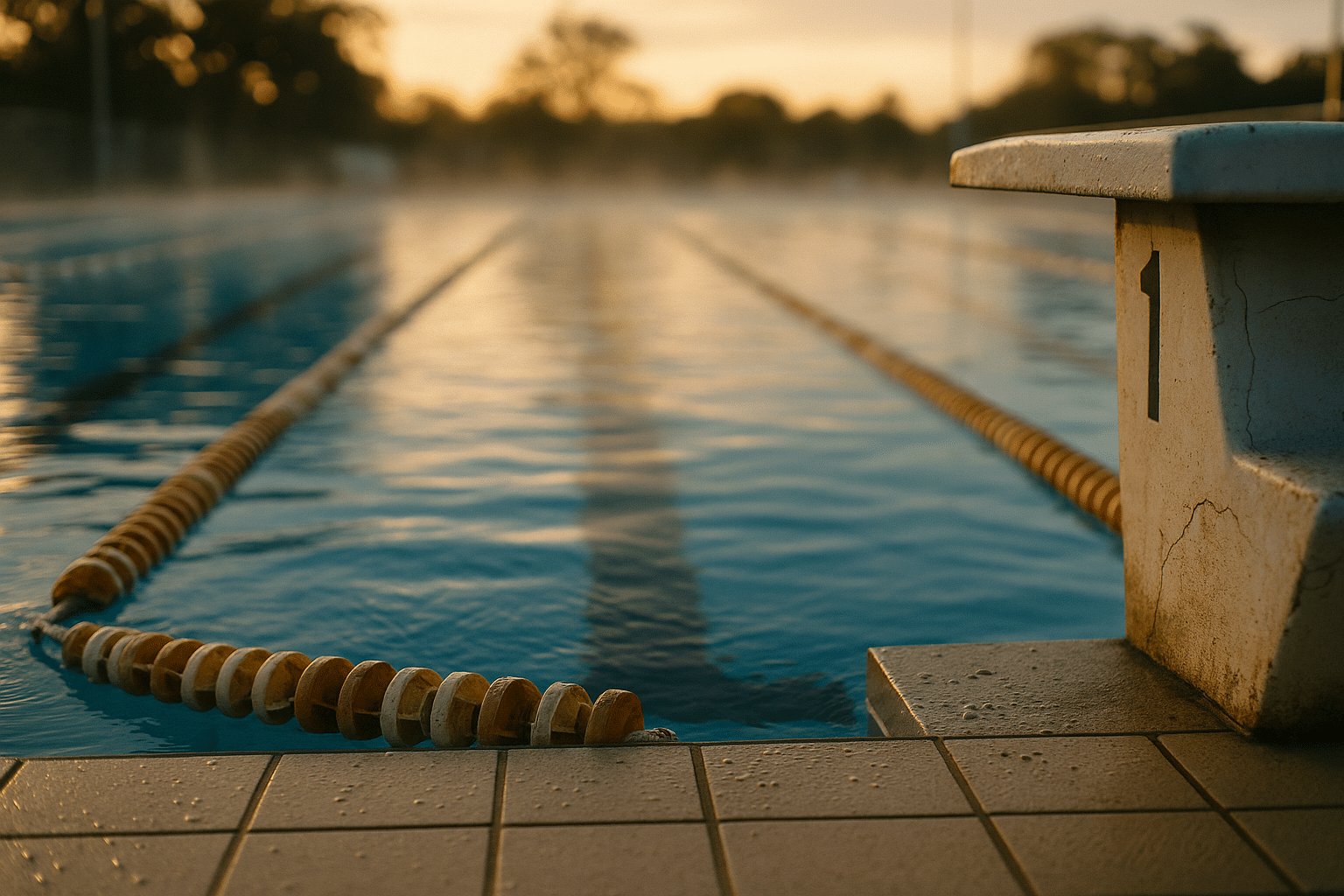
Explore the world of swimming
Outline
– Introduction: Why swimming matters for health, skill, and joy
– The Science-Backed Health Benefits of Swimming
– Mastering Strokes: Technique, Efficiency, and Skill Progression
– Training Plans and Metrics: From First Laps to Performance Goals
– Safety, Equipment, and Pool Hygiene: What to Know Before You Dive
– Conclusion: Find Your Stroke and Start Today
Introduction
Swimming is both a life skill and a lifelong sport, drawing people for reasons that span health, performance, rehabilitation, stress relief, and sheer delight. It invites you into a uniquely supportive environment where gravity loosens its grip, lungs expand to steady rhythms, and motion becomes a conversation between water and will. Whether your goal is to move pain-free, cross a bay, or simply finish a lap without stopping, swimming offers accessible pathways and measurable progress. It is gentle on joints yet potent for the heart, technical yet meditative, social yet deeply personal. In the following sections, we explore evidence-based benefits, explain how to refine technique, lay out practical training frameworks, and detail safety and hygiene essentials. Think of this article as a lane line in a busy pool: a guide that keeps you moving forward with clarity and confidence.
The Science-Backed Health Benefits of Swimming
Swimming delivers a combination of cardiovascular conditioning, muscular endurance, and mobility that is hard to replicate on land. Immersion reduces body weight load, allowing many people—especially those with joint discomfort or prior injuries—to train aerobically without the repetitive impact common to running. At a moderate pace, lap swimming typically expends roughly 400–700 kilocalories per hour for many adults, depending on body mass, stroke choice, and water temperature. Unlike some forms of cardio that emphasize a narrow set of muscles, swimming distributes work across the upper body, core, and lower body, promoting balanced development and joint-friendly strength.
Physiologically, regular swim sessions can support heart health by challenging stroke volume and cardiac output while often keeping perceived exertion manageable due to the cooling effect of water. Breathing patterns in the water—especially with bilateral breathing in front crawl—encourage rhythmic ventilation and can nudge improvements in respiratory muscle endurance. The horizontal position may also aid venous return, contributing to an efficient circulatory response at a given intensity compared with upright exercise.
Beyond the heart and lungs, the musculoskeletal system benefits from the resistance properties of water. Every pull and kick is resisted in multiple planes, encouraging controlled motion and joint stability. Many people report fewer post-workout aches when progressing gradually in the pool, and those managing stiffness or mobility limitations often find the buoyancy of water enables a fuller, more comfortable range of motion. For older adults, swimming can help maintain independence by preserving aerobic capacity and core stability, both linked to balance and daily function.
Mental well-being is another widely reported benefit. The repetitive nature of laps, the sensation of buoyancy, and the simple boundary of a lane can create a calm focus. Many swimmers describe reduced stress after sessions, crediting the metronomic combination of breath, stroke, and sound-dampened immersion. Where appropriate in a training week, low-intensity recovery swims may assist with active circulation and perceived muscle relaxation. Consider these common reasons people turn to the pool:
– Low-impact training that is accessible across age groups
– Whole-body conditioning with balanced muscle engagement
– Structured breathing that can foster focus and relaxation
– Scalable intensity for weight management and cardiovascular health
Mastering Strokes: Technique, Efficiency, and Skill Progression
Efficient swimming is a craft shaped by hydrodynamics. Water rewards streamlined shapes and punishes excess drag. While raw fitness helps, technique determines how well that fitness translates to speed and ease. Focusing on body position, alignment, and a clean catch phase yields outsized returns for both novices and experienced swimmers.
Front crawl (often called freestyle) is the most time-efficient stroke for distance. The essentials: a long, horizontal body line; a stable, engaged core; and a high-elbow catch that anchors the forearm vertically. Think of the hand and forearm as a single paddle pressing water back, not down. Avoid crossing the midline with the hands; enter at about shoulder width with fingertips slightly pitched down. Rotational timing matters: rotate from the hips and core, keeping the head quiet, so the body rolls as a unit rather than snaking through the water. Breathing bilaterally (to both sides on alternating cycles) can improve symmetry and reduce neck strain.
Backstroke shares many principles—streamlined body line and rotational control—while facing upward. The catch begins with the little finger entering first, then an early vertical forearm to press water toward the feet. Because the face is out of the water, breathing is easier, making backstroke useful for recovery sets during a workout. Maintain a neutral head position to keep hips high; excessive chin tuck can sink the legs.
Breaststroke is rhythm and timing. The power phase involves a sweeping, outward-inward arm pull paired with a whip-like kick, followed by a glide. Overly wide pulls increase drag, and rushing the kick before finishing the pull can disrupt momentum. Focus on a compact, powerful kick and a streamlined glide with hands together, arms fully extended, and head low between strokes.
Butterfly, the most demanding stroke, rewards cadence and efficiency. The key is not brute force but a well-timed body undulation, an early vertical forearm during the catch, and a two-beat kick pattern that syncs with the arm cycle. Keeping the chin low on breath and recovering arms relaxed over the surface helps conserve energy.
Skill progression is most effective when broken into narrow focuses:
– Body line: drills with fins or snorkel to learn neutral head and high hips
– Catch mechanics: sculling variations to feel pressure on the forearm
– Kick efficiency: short sets emphasizing narrow, steady kicks to reduce drag
– Timing: breathing patterns and stroke counts to maintain rhythm across distances
Video analysis can accelerate learning, but mindful repetition works, too. Pick a single cue—“high elbow,” “quiet head,” or “long line”—and hold it for an entire set. Small improvements in drag reduction compound, turning the same effort into smoother speed.
Training Plans and Metrics: From First Laps to Performance Goals
Effective swim training blends structure, variety, and recovery. Even for recreational swimmers, having a plan prevents plateaus and builds confidence. A simple framework uses three effort zones: easy aerobic (you could speak in short phrases), steady-tempo (focused but controlled), and threshold-like efforts (challenging, with limited ability to talk). Rotate these through the week depending on experience and goals, and adjust volume gradually to respect your joints and shoulders.
For true beginners, the priority is comfort and consistent exposure. Start with short repeats and planned rests:
– 8–12 x 25 meters easy, resting as needed between repeats
– 6–8 x 25 kick with a board to learn steady propulsion
– 4–6 x 25 drill (e.g., single-arm freestyle or catch-up) to reinforce technique
Accumulate 600–1,000 meters in a session at first, two to three times per week, and let progress be measured by smoother form and shorter rests, not just distance.
For intermediates, introduce sets that mix aerobic volume with skill:
– 3–4 x 200 meters easy aerobic, focus on bilateral breathing
– 8–10 x 50 meters at steady-tempo with 20–30 seconds rest
– 6–8 x 50 drill/swim by 25 to reinforce cues at moderate effort
Include a gentle warm-down and shoulder mobility work post-swim. Weekly totals may range from 2,000 to 6,000 meters depending on time and recovery.
For performance-minded swimmers, threshold sets sharpen stamina while maintaining form:
– 3 x 300 meters at comfortably hard pace with consistent splits
– 12–16 x 50 meters on a short interval, holding even times
– Alternating pull sets (with buoy) and kick sets to balance workload
Track times per repeat, stroke counts, and perceived exertion. Aim to hold pace while keeping technique intact—if stroke count climbs and form degrades, pace is too high or rest too short.
Key metrics to monitor include repeat times, average pace per 100 meters, stroke count per length, and heart rate response post-set. Many find that reducing stroke count by even one or two per length at equal speed indicates growing efficiency. Additionally, use simple progress markers: fewer rests during a 500-meter continuous swim, smoother bilateral breathing, or a more consistent pace across a ladder set (e.g., 100-200-300-200-100). Because water cools the body quickly, build in short deck breaks to assess how you feel and to recalibrate technique cues. Consistency—three or more sessions most weeks—often leads to steady, satisfying gains.
Safety, Equipment, and Pool Hygiene: What to Know Before You Dive
Safety begins long before your first lap. If you’re new to swimming or returning after time away, ease into training and choose supervised facilities when possible. Clear rules of lane etiquette—keep right or circle swim depending on signage, pause at the wall to let faster swimmers pass, and push off with awareness—reduce stress for everyone. Warm up shoulders and hips with gentle arm circles, scapular activations, and bodyweight squats to prime key muscle groups before you enter the water.
Basic equipment enhances comfort and technique without complexity. Goggles protect eyes and allow relaxed head position; a well-fitted swim cap streamlines hair and reduces drag; and a suit that stays secure during push-offs is essential. Training tools can be helpful when used purposefully: a snorkel allows uninterrupted focus on body line and catch; a pull buoy can isolate the upper body to refine stroke timing; short fins encourage proper kick amplitude and improve body position. Apply tools sparingly and return frequently to full-stroke swimming to integrate skills.
Pool hygiene and water quality matter for both enjoyment and health. Facilities typically manage sanitation with disinfectants that should control pathogens while keeping the water comfortable. Practical observations can guide your choice:
– Water should look clear, with the pool’s floor lines visible
– A sharp, pungent odor often signals combined byproducts from contaminants, not “extra clean” water
– Showering before you swim reduces organic load and helps maintain a pleasant environment
– Rinsing after helps remove residual chemicals from skin and hair
Ear and skin care are simple but important. Dry your ears after sessions and consider gentle, alcohol-free drops if you’re prone to irritation. Moisturize skin post-swim, and use a mild shampoo that addresses chlorine exposure. For those with sensitive eyes, slightly looser goggle straps or alternative gasket shapes can reduce pressure without compromising the seal.
Open water adds additional safety considerations. Choose supervised venues, check weather and water temperatures, and use a brightly colored tow float for visibility. Avoid swimming alone; a buddy or kayak escort provides rapid assistance if needed. Acclimatize to cooler water gradually and consider a thermal cap and appropriate suit in cold conditions. Simple planning—route selection, sighting practice, and exit points—turns a memorable adventure into a safe one.
Conclusion: Find Your Stroke and Start Today
Swimming is a versatile pathway to health, skill, and steady confidence. In one environment, you can train your heart, strengthen your shoulders and core, refine breath control, and unwind your mind. The water meets you where you are: if you need gentle movement, it provides; if you seek a challenge, it offers resistance with every centimeter you press. Whether you are a beginner relearning buoyancy or an experienced lap swimmer chasing even splits, progress comes from the same ingredients—clarity of purpose, attention to technique, and consistent practice.
For newcomers, the first milestone is comfort. Let the early weeks center on relaxed floating, controlled exhalation into the water, and short repeats with generous rest. Correct breathing and body position unlock efficiency more quickly than any single fitness trick. If you’re returning from an injury or managing joint sensitivity, the pool’s low-impact support and multidirectional resistance can help you rebuild capacity without the pounding common to land-based exercise. Keep intensity modest at first; allow your shoulders time to adapt as you add distance and frequency.
For those already swimming regularly, adding structure deepens results. Set a simple weekly plan—one technique-focused day, one aerobic endurance day, and one mixed-intensity session. Track a few metrics that matter to you, such as repeat times and stroke counts, and celebrate small wins like smoother bilateral breathing or a calm, consistent pace across a main set. Across seasons, sprinkle in variety: a backstroke recovery set for posture, a breaststroke drill block to refine timing, or a few safe open-water sessions to practice sighting and steady rhythm in natural conditions.
As you explore this world, remember the fundamentals that keep your experience positive:
– Respect lane etiquette and warm up thoughtfully
– Choose clean, well-managed facilities and rinse before and after you swim
– Use training tools with purpose, and return to full-stroke regularly
– Set patient, realistic goals and let comfort and form lead the way
Your journey does not need fanfare to be meaningful. A quiet morning at the pool, the soft echo of water against tile, the steady rise of breath—these are markers of progress as real as any stopwatch. Start where you are, keep your focus on technique and consistency, and let the water help you move forward, one smooth length at a time.


